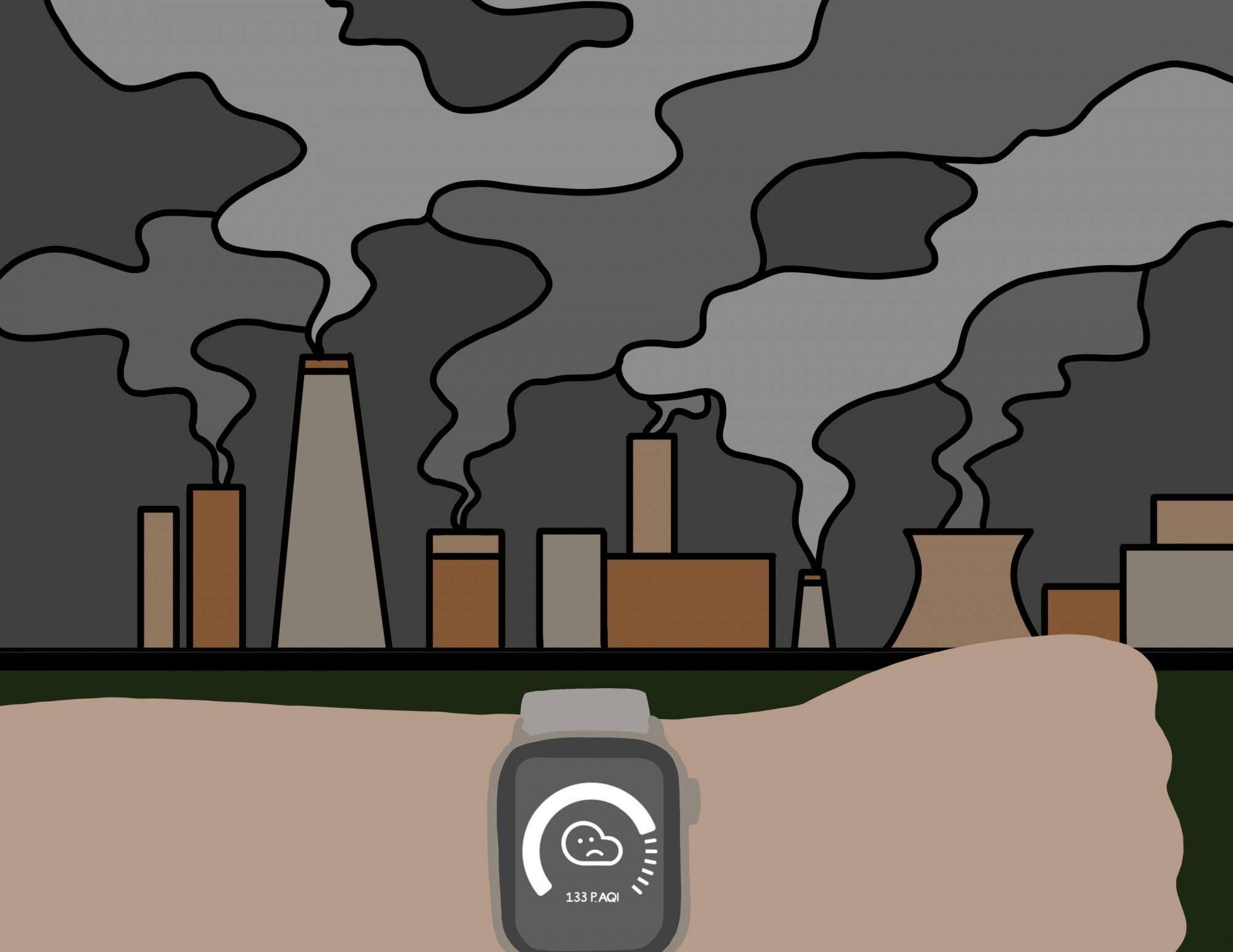Michigan State University researcher Andrew Mason is working to design a pollution monitoring device small enough to fit inside your wristwatch.
Mason, a professor of electrical and computer engineering at MSU, is the sole MSU faculty member on a project that aims to design and create a small, personal and portable device that can track and monitor particulate matter, the mixture of solid particles and liquid droplets found in the air.
These pollutants can enter the body through respiration and can negatively affect the heart and respiratory system. This technology could help individuals understand how much pollution they are exposed to, allowing them to avoid pollution hotspots or more heavily polluted areas.
Pollution monitoring devices are usually fairly large, Mason said.
“The state-of-the-art approach is more suitcase size monitors, and sometimes even much larger devices that are pulled in trailers behind trucks. ... They sample data for a long period of time, typically maybe an entire day,” Mason said. “That gives the scientist some idea where pollution hotspots are, but it doesn’t really get us a good picture of what an individual's exposure might be.”
The project was recently awarded a five-year, $2.78 million grant from the National Institute of Environmental Health Sciences, one of the National Institutes of Health. As the primary investigator on this project, MSU’s branch of the project will receive a little over half of that money. The rest will be shared between the project's co-collaborators at Oakland University and the University of Michigan.
The research seeks to provide a technology that anyone could use, a device that would monitor an individual’s exposure to particulate matter in real time. One of the ways this goal may be met is through the implementation of this technology into a next-gen smartwatch, the same way that physiological measurements such as heart rate appear in current-generation smartwatches.
“We don’t have a goal necessarily to build a smartwatch, we’re developing the component technologies that someone like Apple or Samsung might pick up to implement,” Mason said. “It may be worth noting that the last couple of Ph.D. students that left my lab work at Apple now. ... There’s definitely an interest in the companies, that they pick up students doing this kind of work.”
Mason said that he would be even happy with getting the technology down to the size of a hockey puck.
The technology’s monitoring and detection system would involve a three-stage process, during which particulate matter is captured, counted and analyzed. Particles in the air are captured in a tiny amount of liquid in the miniaturized device and passed through a channel about the size of a micron, one-millionth of a meter, where the presence and number of these particulates are detected.
The particles then pass through a similar channel, where their chemical composition is analyzed.
The technology is designed to primarily detect the presence of soot and heavy metals in the air, both of which are byproducts of burning fossil fuel.
As for progress, Mason said that prototypes of the three stages have been developed, either in simulations or as some version of hardware prepared in order for the proposal to receive funding.
“There's still a lot of unknown challenges that we have to face over the next five years of the research,” he said.
One challenge the project is currently facing is adjusting the current prototypes to be able to detect smaller particulate matter, Mason said.
“The smaller the particle is, the deeper it will penetrate into your body, and the more likely it is to have a health impact,” he said.
Support student media!
Please consider donating to The State News and help fund the future of journalism.
Discussion
Share and discuss “MSU researcher part of project to design portable, pollution monitoring technology” on social media.







